When you want to refresh your mind and create some memorable moments with your loved ones you just need to go camping in nature because it is a way to connect with nature and camping can give you everything from calmness to mental peace. However, where camping gives you so many joys on the other hand it also poses some possible health concerns such as the risk of getting yeast infection after spending some time in nature. So, in this article, I am going to discuss how you prevent this infection and stay healthy while healing in the outdoors.
It’s good to see that people are increasingly focused on their health, especially men.
According to: Hawaii Pacific University
Table of Contents
Can camping cause a yeast infection?
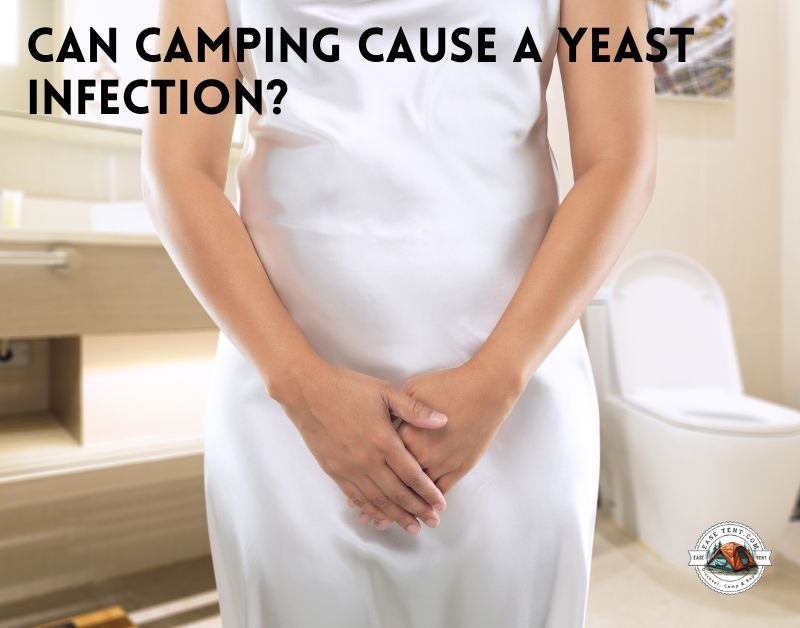
Before heading out for an outdoor trip a common question that often comes up is can camping cause a yeast infection?
The answer is not as straightforward as you might think because there are a lot of factors that matter like the conditions that you encounter while camping and how much you prioritize your hygiene during camping time. Think about it—when you are out in the wilderness, you are exposed to factors like humidity, heat, and lack of proper hygiene.
All of these things can create a perfect environment for yeast infection to develop and grow. That’s why it is essential to take the right precautions to keep yourself comfortable and healthy.
If you ask me can camping causes yeast infection I will say yes it will.
How to not get a yeast infection while camping?
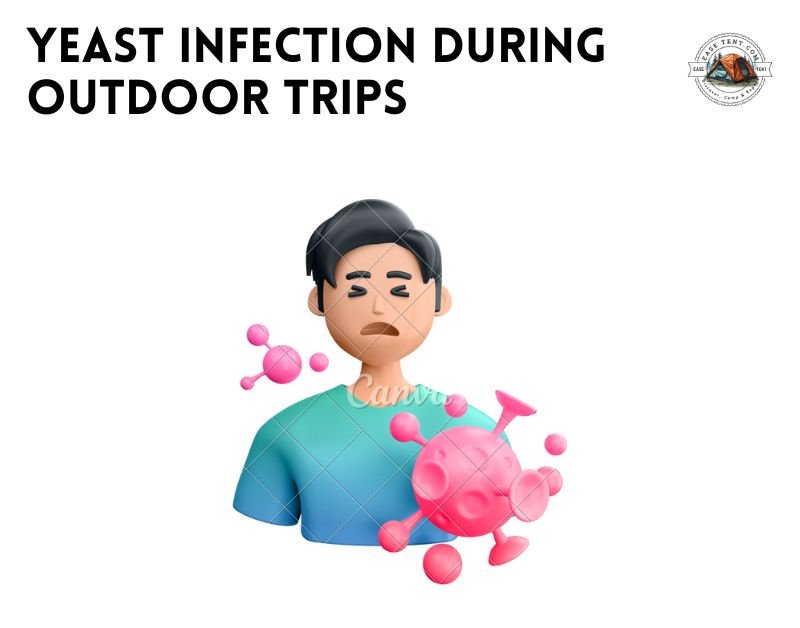
There are some important precautions that will keep you healthy and free of any bacterial infections. Like,
Always pack light, breathable clothing that won’t trap moisture because a moist environment is the best habitat for all the microbes to grow. So, Staying dry is like your first line of defense.
Make sure to change out of your clothes when you get wet, such as after any activity that produces sweat. It’s not just after sweating—you should change your clothes whenever you get wet, like after being caught in the rain or after bathing in a river or lake. So, regularly changing your clothes will allow you to enjoy your trip without getting smelly or infected you can also use gentle wipes or alcohol swabs for cleaning your intimate area.
Be sure to also change your undergarments when you change your clothes.
Additionally, don’t forget to bring an antifungal cream with you.
How to recognize yeast infection early?
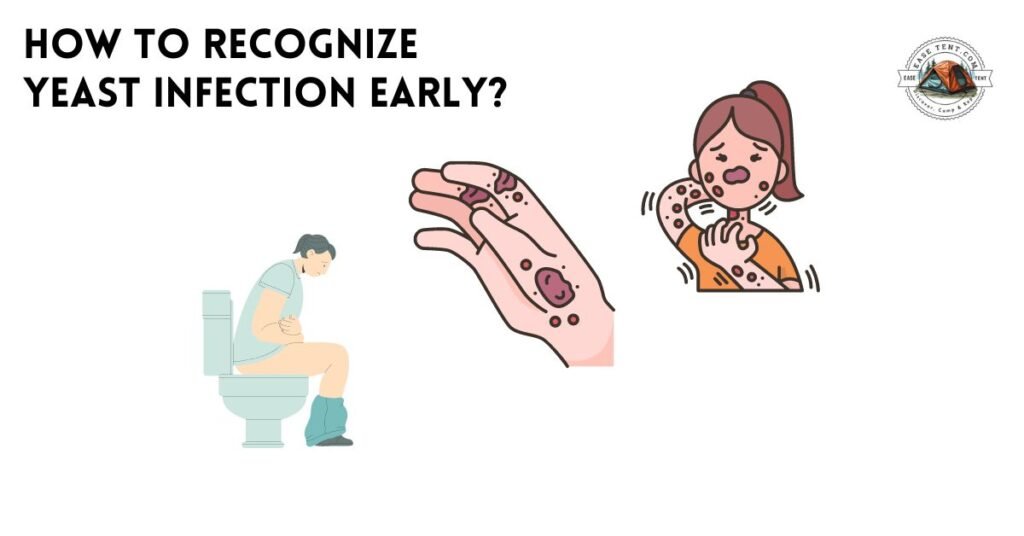
Recognizing a yeast infection early can make a huge difference in your outdoor trips it will help you to cure your infections early.
The best way to spot yeast infection is by paying attention to your body and noticing any changes. If you start to feel itching or irritation in your intimate areas like the vagina, armpits, and other moist and warmer parts of the body, that’s often one of the first signs of a yeast infection.
You might also notice redness or swelling, and sometimes there’s a thick, white discharge that looks a bit like cottage cheese.
Another thing to look out for is discomfort during urination or sex. These symptoms might seem mild at first, but catching them early means you can start treatment right away and prevent the infection from getting worse. Trust your instincts—if something feels off, it’s better to address it sooner rather than later.
Factors that increase the risk of Yeast Infections
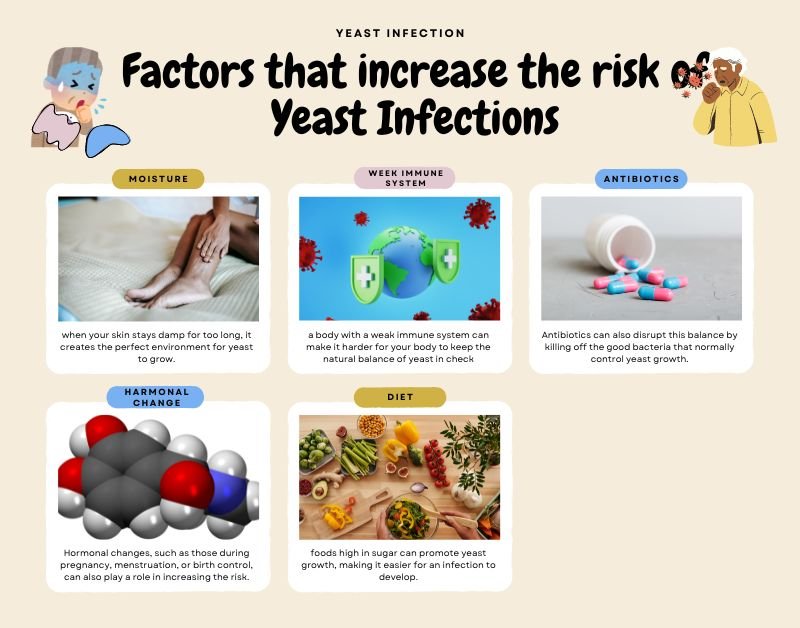
There are several factors that can increase the risk of yeast infections, and being aware of them can help you take steps to prevent one.
One major factor is moisture—when your skin stays damp for too long, it creates the perfect environment for yeast to grow. This can happen if you’re wearing tight or non-breathable clothing, or if you stay in wet swimsuits or workout gear for too long.
Another factor is a weakened immune system, a body with a weak immune system can make it harder for your body to keep the natural balance of yeast in check.
There are some medications, like antibiotics, that can also disrupt this balance by killing off the good bacteria that normally control yeast growth.
Hormonal changes, such as those during pregnancy, menstruation, or birth control, can also play a role in increasing the risk.
Even your diet can have an impact—foods high in sugar can promote yeast growth, making it easier for an infection to develop.
Can a yeast infection spread to the outside?
Yes, a yeast infection can spread from one to another part of your body, from the armpits to the arms and from the vagina to the thigh, groin, or even the buttocks.
If you scratch the affected area, it can cause the infection to spread further and even lead to breaks in the skin, which might get infected with bacteria. That’s why it’s important to treat a yeast infection as soon as you notice the symptoms and avoid scratching or irritating the area.
How to stop the yeast from spreading?
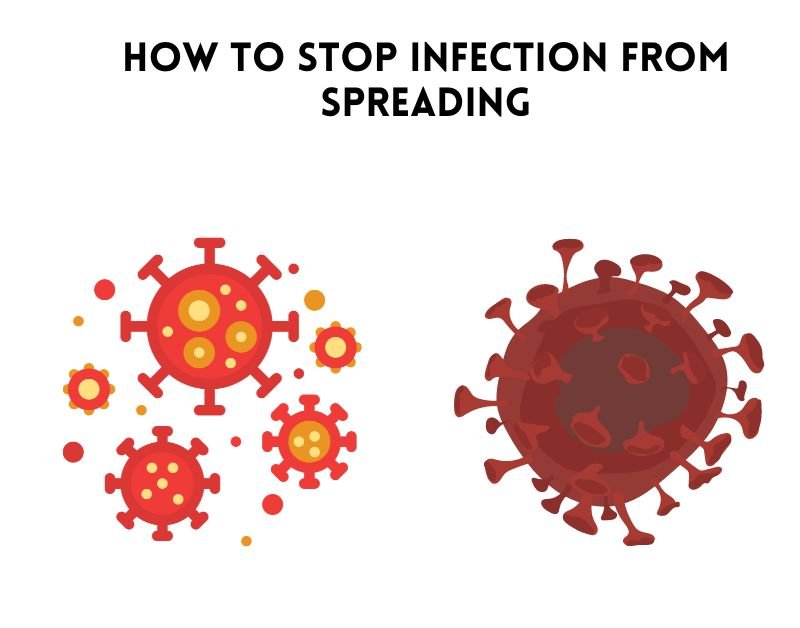
To stop a yeast infection from spreading, the first step is to start treatment as soon as you notice any symptoms. There are some over-the-counter (drugs that don’t require any physician’s prescription) antifungal creams, ointments, or suppositories that can be very effective at containing the infection and preventing it from spreading to other areas.
Keeping the affected area clean and dry is also crucial. Make sure to wash with gentle, unscented soap and water, and then pat the area dry completely before putting on any treatment or clothing. Avoid wearing tight or non-breathable clothing that can trap moisture, as this can make the infection worse.
It’s also important not to scratch the infected area, even when you feel itchiness. Scratching can cause the infection to spread and might lead to further irritation or even a secondary bacterial infection. If the itchiness is too much to bear, using a cold compress can help soothe the area without causing more damage.
Can I get rid of a yeast infection overnight?
While it would be great to get rid of a yeast infection overnight, it’s usually not realistic. Most over-the-counter antifungal treatments take a few days to clear the infection fully. However, starting treatment as soon as you notice symptoms can help relieve discomfort more quickly.
FAQs
Can sitting too long cause yeast infections?
Yes, sitting for too long a period can increase the risk of yeast infections. Prolonged sitting can trap moisture and heat and create an ideal environment for yeast to thrive.
What can I wash with to prevent yeast infection?
To prevent yeast infections, use gentle, unscented soaps for washing the genital area. Avoid harsh chemicals and scented products, as these can disrupt the natural balance of bacteria and yeast. Opt for products specifically designed for sensitive skin if possible.
Can humidity cause yeast infections?
Yes, high humidity can contribute to yeast infections. Warm, damp environments create an ideal setting for yeast to grow. To prevent this, try to stay dry, wear breathable fabrics, and change out of wet clothes promptly.
Why does my girlfriend keep getting yeast infections?
Recurring yeast infections can be due to several factors, such as hormonal changes, a weakened immune system, or the use of antibiotics. It might also be related to lifestyle factors like diet and hygiene practices. Consulting with a healthcare provider can help identify the underlying cause and appropriate treatment.
How often should you shower with a yeast infection?
While you don’t need to overdo it, maintaining good hygiene is important. Shower daily with gentle, unscented soap, and make sure to dry the area completely. Avoid using irritating products or douching, as these can exacerbate the infection.
Should I sleep with pants on with a yeast infection?
It’s best to sleep without pants or in loose, breathable clothing when you have a yeast infection. This helps keep the area dry and allows for better air circulation, which can aid in the healing process and prevent further irritation.
You May Also Like

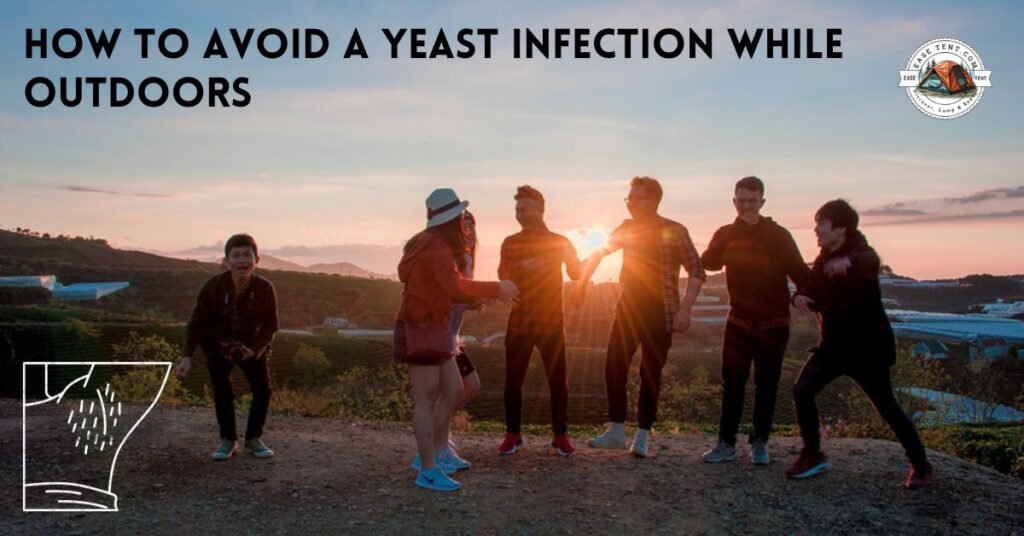
Pingback: Can Camping Make You Sick - The Great Outdoors Blog
Pingback: Camping with a New Tattoo: Risks, Precaution & Consideration